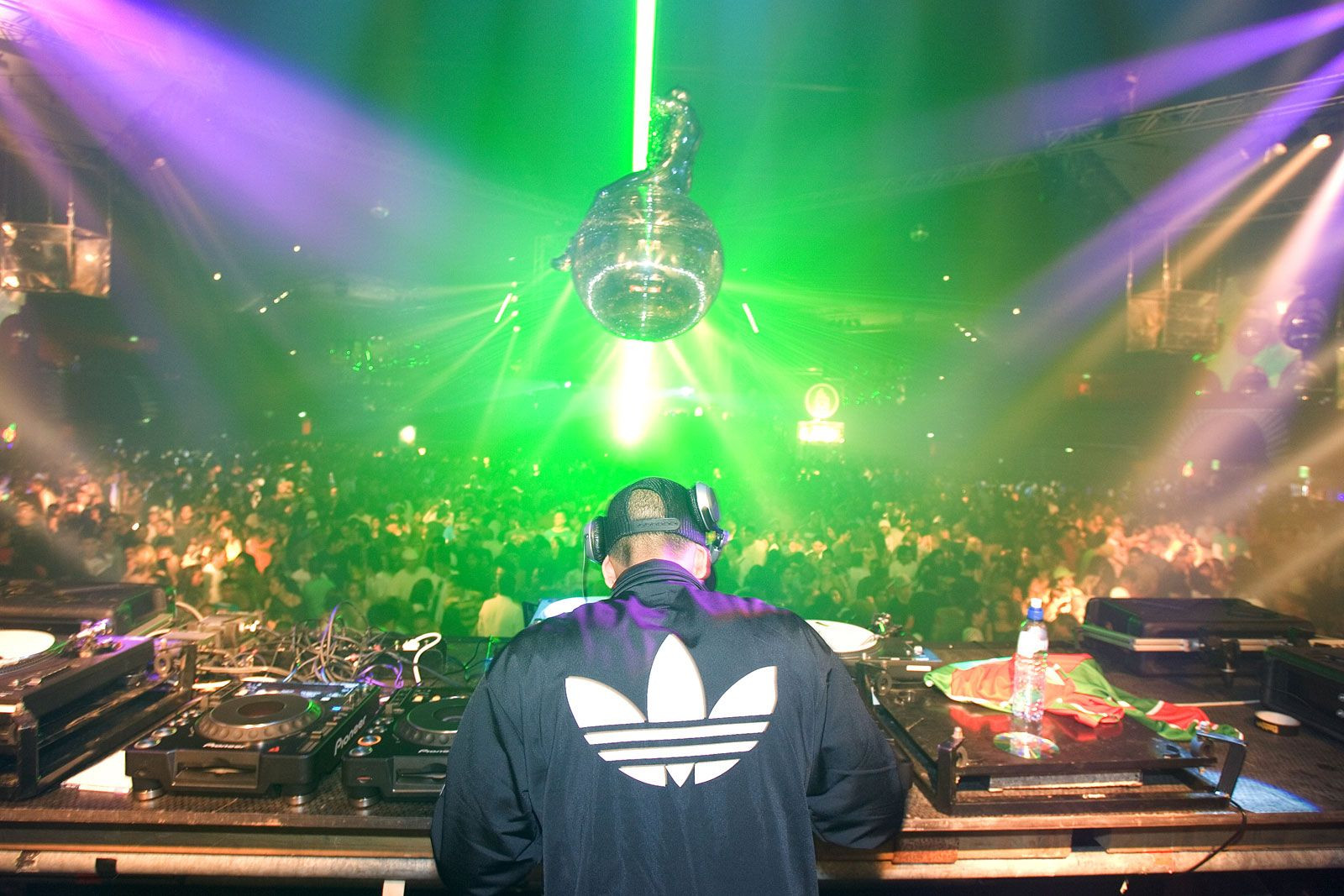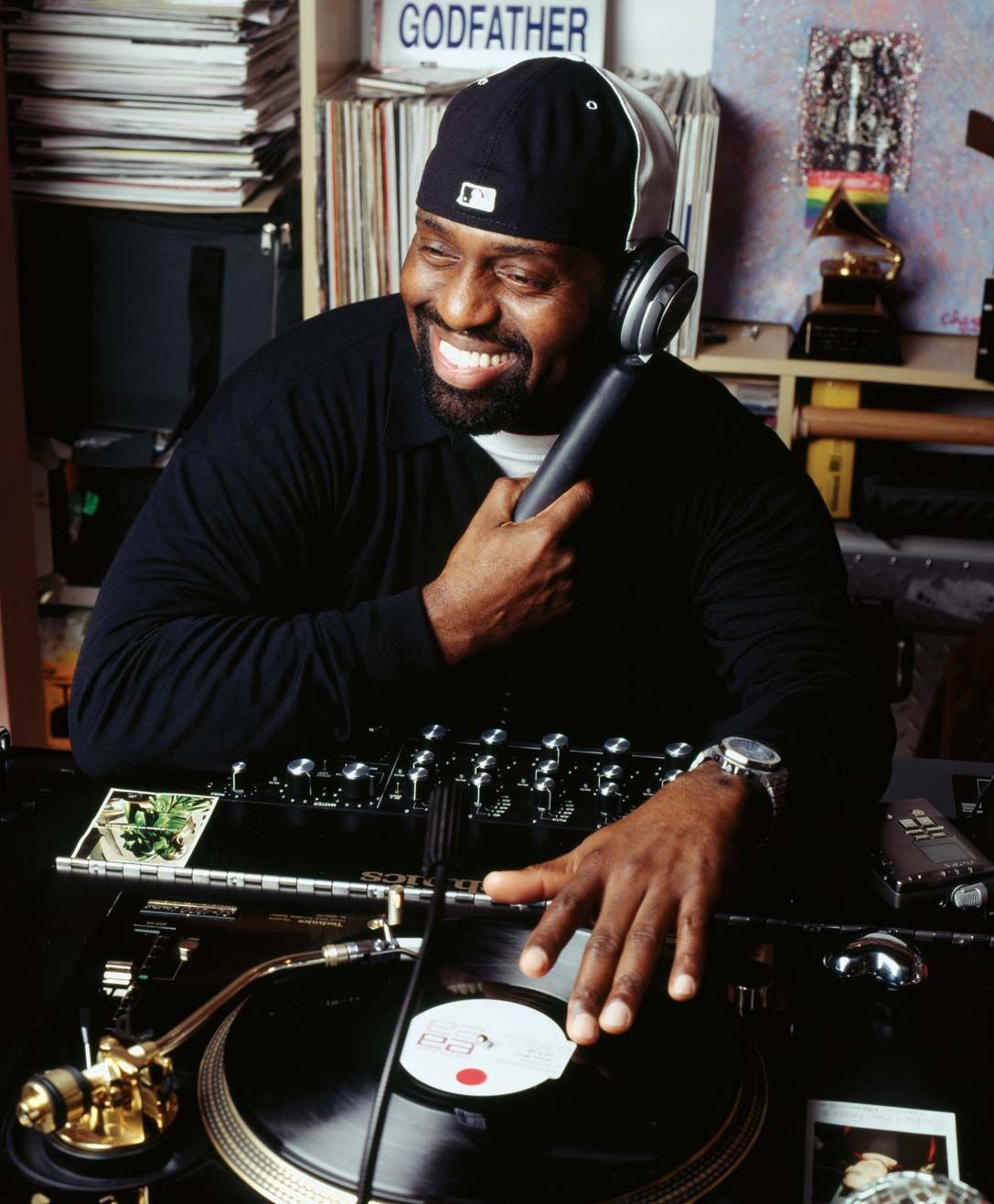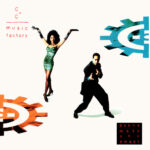Electronic Dance Music (EDM) is more than just a genre; it’s a vibrant and diverse universe of sound. Emerging in the mid-1980s, EDM acts as an umbrella term, encompassing a wide spectrum of musical styles. From the soothing, beatless textures of ambient to the frenetic energy of 200 BPM hardcore, EDM showcases incredible sonic diversity. Within this vast landscape, genres like house, techno, drum and bass, dubstep, and trance stand out as prominent and influential forms, each contributing uniquely to the global EDM culture.
 Energetic Crowd Experiencing Electronic Dance Music at a Live DJ Set
Energetic Crowd Experiencing Electronic Dance Music at a Live DJ Set
Defining the Sound of EDM: Key Characteristics
Several core elements define electronic dance music and set it apart. Firstly, EDM is characterized by its embrace of deliberately artificial sounds. Often crafted using vintage, affordable equipment from the early 1980s—think of the Roland 303 bass synthesizer and the 808 drum machine—or meticulously constructed from samples, these sounds lean into the synthetic. While live instruments and vocals can feature in EDM tracks, they typically serve as embellishments rather than the central focus.
Crucially, EDM is purpose-built for dance and collective experience. Rhythm is paramount across most EDM styles, engineered to keep dancers moving throughout the night. Even ambient EDM, with its less beat-driven nature, provides a sonic backdrop for relaxation and unwinding as the night concludes. Furthermore, EDM tracks are primarily designed for DJs to play in clubs, seamlessly mixed together to create extended sets, rather than for individual listening at home. Despite this club-centric origin, many EDM tracks have achieved mainstream popularity, crossing over to reach wider audiences.
From Chicago House to Detroit Techno: The Birthplaces of EDM
The roots of electronic dance music can be traced back to the early 1970s. Early examples include Sly and the Family Stone’s hit “Family Affair” (1971), which incorporated a drum machine, and the pioneering work of disco producers like Giorgio Moroder and synth-pop innovators such as Kraftwerk. These artists laid crucial groundwork for EDM’s sonic trajectory. However, the electronic dance music as we know it, which evolved into a global cultural phenomenon, truly began to take shape in the American Midwest during the early 1980s.
Chicago played a pivotal role with house music. Frankie Knuckles, the resident DJ at the Warehouse club, a prominent venue within the African American gay community, was instrumental in this development. Knuckles would create his own reel-to-reel edits of disco tracks, extending instrumental sections to maintain energy on the dance floor all night long. When Knuckles, alongside other Chicago DJs like Ron Hardy, Steve (“Silk”) Hurley, and Farley (“Jackmaster”) Funk, began incorporating drum machines into their DJ sets, they essentially codified the foundational template for house music.
 Frankie Knuckles, the Godfather of House Music, DJing in Chicago
Frankie Knuckles, the Godfather of House Music, DJing in Chicago
Simultaneously, Detroit was forging its own distinct path with techno. While many figures contributed to techno’s early development, Juan Atkins is widely acknowledged as a key originator. In 1981, Atkins partnered with Rik Davis as Cybotron, releasing the seminal single “Alleys of Your Mind.” After their album Enter (1983), Atkins launched his label, Metroplex, and began releasing tracks as Model 500. Soon, Kevin Saunderson and Derrick May—who, with Atkins, formed the DJ collective Deep Space—launched their own labels (KMS and Transmat, respectively) and released their own groundbreaking music. The Detroit sound was characterized by abstract, instrumental funk, though Saunderson sometimes included vocalists, achieving significant success with the soul-infused duo Inner City. The term “techno” became formalized in 1988 when Atkins named a track “Techno Music,” which became the title track for the influential compilation Techno! The New Dance Sound of Detroit, solidifying the genre’s identity.
The Shoom and the Rise of Rave Culture
EDM’s association with “drug music” is intrinsically linked to a defining moment in its history. In the summer of 1987, a group of British DJs journeyed to Ibiza, Spain, for a week of immersive partying. At Amnesia, an open-air club, DJ Alfredo, originally from Argentina, played eclectic sets that heavily featured Chicago house and Detroit techno. The visiting DJs experienced a profound connection with the music, amplified by the effects of MDMA (Ecstasy). (This era also gave rise to the Balearic Beat scene.)
Returning to London that December, Danny Rampling, one of the DJs from the Ibiza trip, launched a weekly party called Shoom in a fitness center. This scene quickly became known as “acid house,” named after the swirling, resonant “acid” sound produced by the Roland 303 synthesizer, a prominent feature in Chicago house records.
Within a year of Shoom’s inception, acid house exploded into a major youth culture phenomenon in England, rivaling the impact of punk a decade prior. Parties rapidly expanded from clubs to fields and warehouses, many operating outside legal frameworks. These “raves”—characterized by vibrant Day-Glo attire and oversized, playful fashion drawing from hip-hop and video game aesthetics—became the blueprint for a global party culture. By the early 1990s, raves had proliferated across Europe and into North America. From there, DJ-driven dance scenes spread globally, with continuous emergence of new subgenres and stylistic variations enriching the ever-evolving world of club culture.

